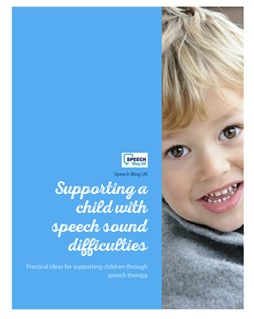I often get asked about children who have learnt how to say a new sound, but don’t use it when they are talking. This can seem frustrating, but actually this is a huge step.

There are a couple of reasons why this can happen.
Firstly, he might not really hear or recognise his own errors when he is talking, so he doesn’t realise that he has said the word incorrectly. It is often easier to notice errors when someone else is talking, than it is to notice your own. I’m sure we have all had the experience of discovering that we didn’t say quite what we thought we had!
Secondly, it is very likely that the sound is still more effortful for him to say than what he was saying before. He can say it, but he still needs to think about it quite hard. It’s really hard work to do this all the time, so he only tends to do it if someone reminds him.
Often a block of speech and language therapy sessions will end when a child is able to say the target sound in words. Some work may be done on phrase and sentence level, but often the skill of generalisation is left for parents and schools to do. And in many ways, this is the best place for it to happen, as everyday conversation is now where the problem is.
Here are a few tips for helping a child to use their new sound in conversation.
- Make sure they are able to say the sound in structured sentences to begin with. Get some pictures of words with the target sound in. You could make your own, or check out our shop where we have packs for several speech sounds. Play games with the pictures and before they take a turn in the game, ask your child to make up a sentence with the word in. You can find lots of game ideas here.
- Make up stories using your picture cards. Put a pile of pictures face down on the table and take turns to turn one over, and add a sentence to a story.
- Try having a word of the day. Choose a word with the target sound in. Make sure it is one that is likely to come up (for example, car might be more useful than koala!) Set your child a challenge to try and say that particular word correctly all day. If they struggle, prompt and remind them but only on that one word. If your child can choose their own word, then so much the better!
- Try focusing on the sound for just 5 minutes a day. Sit and chat to your child about anything, but let them know that in those 5 minutes you are going to see how many times you can hear them say their new sound correctly. Give them a point for each correct sound you hear. See if they can beat their score the next day.
- With able readers, reading aloud can be a useful activity to practise a new sound. If they find it difficult, it can be useful to look through the passage first and highlight the sound when it occurs to help them remember. NB This is not necessarily as easy as it first sounds. Remember that we are talking about sounds not spelling. So if you are working on c, you wouldn’t need to highlight the word ceiling, but if you are working on s, you would! See if they can spot the tricky ones as they go through!
Finally, remember that it will take time. Keep prompting and reminding them, and praising them when they get it right. Don’t overdo it either though – make sure they have plenty of time to talk freely without being picked up on their sounds too!
If you want more information on how to help a child with speech sounds, click the box at the bottom of this post to join our mailing list. You’ll receive a free e-book about supporting a child with speech sound difficulties.
Also, if you still want to know more about how to help a child to say a new sound check out our online course. This course will take you by the hand through the whole process of teaching a new sound from start to finish and give you lots of tools and resources to help your child through their speech therapy.






Leave a Reply